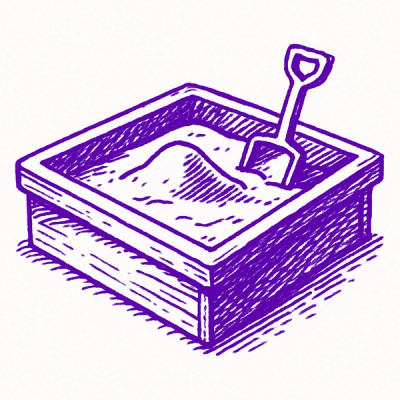
Research
/Security News
Critical Vulnerability in NestJS Devtools: Localhost RCE via Sandbox Escape
A flawed sandbox in @nestjs/devtools-integration lets attackers run code on your machine via CSRF, leading to full Remote Code Execution (RCE).
wagtail-django-recaptcha
Advanced tools
.. image:: https://travis-ci.org/springload/wagtail-django-recaptcha.svg?branch=master :target: https://travis-ci.org/springload/wagtail-django-recaptcha .. image:: https://img.shields.io/pypi/v/wagtail-django-recaptcha.svg :target: https://pypi.python.org/pypi/wagtail-django-recaptcha .. image:: https://codeclimate.com/github/springload/wagtail-django-recaptcha/badges/gpa.svg :target: https://codeclimate.com/github/springload/wagtail-django-recaptcha .. image:: https://coveralls.io/repos/github/springload/wagtail-django-recaptcha/badge.svg?branch=master :target: https://coveralls.io/github/springload/wagtail-django-recaptcha?branch=master
Wagtail forms with a ReCaptcha form field/widget integration app. Wagtail ReCaptcha provides an easy way to integrate the `django-recaptcha <https://github.com/praekelt/django-recaptcha>`_ field when using the Wagtail formbuilder.
Check out Awesome Wagtail <https://github.com/springload/awesome-wagtail>_ for more awesome packages and resources from the Wagtail community.
#. Install wagtailcaptcha via pip pip install wagtail-django-recaptcha or add wagtailcaptcha to your Python path.
#. Add wagtailcaptcha to your INSTALLED_APPS setting.
#. Config django-recaptcha as explained in here <https://github.com/praekelt/django-recaptcha>_.
Field
The quickest way to add a captcha field to a Wagtail Form Page is to inherit from the two options provided, ``WagtailCaptchaForm`` or ``WagtailCaptchaEmailForm``. The first options inherits from ``AbstractForm`` while the seconds does it from ``AbstractEmailForm``. Either way your page is going to display a captcha field at the end of the form.
Example
.. code-block:: python
from wagtail.contrib.forms.models import AbstractFormField
from wagtail.admin.panels import FieldPanel, InlinePanel, MultiFieldPanel
from wagtail.fields import RichTextField
from modelcluster.fields import ParentalKey
from wagtailcaptcha.models import WagtailCaptchaEmailForm
class SubmitFormField(AbstractFormField):
page = ParentalKey('SubmitFormPage', related_name='form_fields')
class SubmitFormPage(WagtailCaptchaEmailForm):
body = RichTextField(blank=True, help_text='Edit the content you want to see before the form.')
thank_you_text = RichTextField(blank=True, help_text='Set the message users will see after submitting the form.')
class Meta:
verbose_name = "Form submission page"
SubmitFormPage.content_panels = [
FieldPanel('title', classname="full title"),
FieldPanel('body', classname="full"),
FieldPanel('thank_you_text', classname="full"),
InlinePanel('form_fields', label="Form fields"),
MultiFieldPanel([
FieldPanel('to_address'),
FieldPanel('from_address'),
FieldPanel('subject'),
], "Email notification")
]
The captcha field can't be added from the admin UI but will appear in your frontend as the last of the form fields.
If you need to customise the behaviour of the form builder, make sure to inherit from ``wagtailcaptcha.forms.WagtailCaptchaFormBuilder`` instead of Wagtail's default form builder, then declare it as usual on the page model.
.. code-block:: python
from wagtailcaptcha.forms import WagtailCaptchaFormBuilder
from wagtailcaptcha.models import WagtailCaptchaForm
class CustomFormBuilder(WagtailCaptchaFormBuilder):
# Some custom behaviour...
class FormPage(WagtailCaptchaForm):
form_builder = CustomFormBuilder
# The rest of the page definition as usual...
For a more thorough example, `Made with Wagtail <http://madewithwagtail.org/>`_ (`github.com/springload/madewithwagtail <https://github.com/springload/madewithwagtail>`_) is an example of an open-source site using this module.
Development
-----------
Installation
Requirements: ``virtualenv``, ``pyenv``, ``twine``
.. code:: sh
git clone git@github.com:springload/wagtail-django-recaptcha.git
cd wagtail-django-recaptcha/
virtualenv .venv
source ./.venv/bin/activate
make init
Commands
Use `make help` to get a list of commands.
Releases
CHANGELOG_.wagtailcaptcha/__init__.py, following semver.master with the PR merged, use make publish (confirm, and enter your password)... _Semantic Versioning: http://semver.org/spec/v2.0.0.html .. _changelog: https://github.com/springload/wagtail-django-recaptcha/blob/master/CHANGELOG.rst
FAQs
A simple recaptcha field for Wagtail Form Pages.
We found that wagtail-django-recaptcha demonstrated a healthy version release cadence and project activity because the last version was released less than a year ago. It has 4 open source maintainers collaborating on the project.
Did you know?

Socket for GitHub automatically highlights issues in each pull request and monitors the health of all your open source dependencies. Discover the contents of your packages and block harmful activity before you install or update your dependencies.

Research
/Security News
A flawed sandbox in @nestjs/devtools-integration lets attackers run code on your machine via CSRF, leading to full Remote Code Execution (RCE).

Product
Customize license detection with Socket’s new license overlays: gain control, reduce noise, and handle edge cases with precision.

Product
Socket now supports Rust and Cargo, offering package search for all users and experimental SBOM generation for enterprise projects.